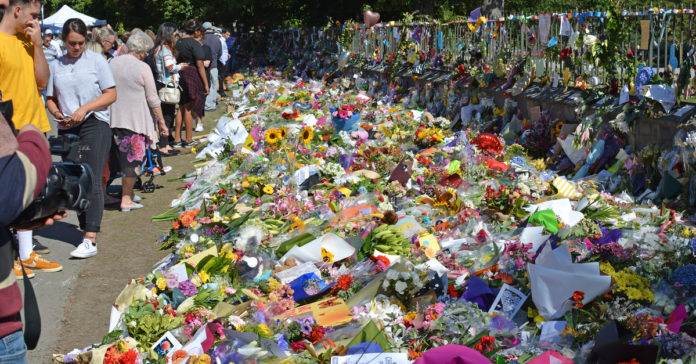
Security agencies in New Zealand missed the Christchurch mosque killer because they were too busy concentrating on “Islamic extremists,” a Royal Commission of Inquiry has found.
The report found that Brenton Tarrant was able to plot, amass an arsenal of weapons and execute his deadly attack without drawing the attention of security agencies which had deployed “an inappropriate concentration of resources” probing Islamic extremism.
The police “did not meet required standards” in their checks and processes in granting Tarrant a firearms licence, the report found.
And “insufficient attention” was given by New Zealand Police over whether one of the killer’s gaming friends – who knew about his racist and Islamophobic views – was an appropriate referee for his firearms licence.
But despite these findings, the report says nothing could have been done to stop the March 15, 2019 attacks, which left 51 Muslims dead, and the agencies were not to blame.
Prime Minister Jacinda Ardern and Police Commissioner Andrew Coster apologised for the failings, but Islamic Women’s Council leader Aliya Danzeisen criticised the secrecy of the report and says justice has not been served to the Muslim community.
Recommendations
Subscribe to our newsletter and stay updated on the latest news and updates from around the Muslim world!
The report looked at how the attacks happened and how they could be avoided in the future, the New Zealand Herald reports.
Many of the 44 recommendations focus on how to prevent, detect and respond to current and emerging threats of violent extremism – and how the new national intelligence and security agency would operate and work with communities, civil society, government, and the private sector.
SIS Director-General Rebecca Kitteridge said while no failures were found within government agencies, “many” lessons could be learned and “significant areas” needed change.
She also apologised to the Muslim community after hearing how they felt “targeted by the security agencies” or felt “under suspicion” when they were not.
Brenton Tarrant
The inquiry, which interviewed Tarrant behind bars, delves deep into his background to try and understand what influenced his extreme views, why he chose New Zealand for a terrorist attack, and how he avoided coming to the attention of authorities.
He displayed racist behaviour from a young age, the inquiry found, primarily concerned about immigration and Muslims moving to Western countries. He was an avid internet user and online gamer, with few childhood friends.
“His life experiences appear to have fuelled resentment and he became radicalised, forming extreme right-wing views about people he considered a threat. Eventually, he mobilised to violence,” the report says.
He used the AU$457,000 given to him by his father Rodney before he died by suicide in April 2010, to travel extensively, firstly exploring New Zealand and Australia in 2013, and then around the world between 2014 and 2017.
He visited right-wing internet forums, subscribed to right-wing YouTube channels, and “read a great deal about immigration, far right political theories and historical struggles between Christianity and Islam.”
He was a follower and prominent commenter on the Facebook pages of the United Patriots Front and The True Blue Crew far right groups based in Australia. He also visited controversial online bulletin boards 4chan and 8chan.
A copy of the Oslo terrorist’s manifesto was later found on the gunman’s SD memory card in a drone he used to fly over the Al Noor Mosque for pre-attack reconnaissance. The inquiry found the Oslo terrorist to have been a significant influence on his thinking.
The inquiry was sure that Tarrant came to New Zealand in August 2017 with a terrorist attack in mind.
On the day of the massacre, the murderer had six firearms including semi-automatic shotguns and two military-style semi-automatic rifles along with “a large amount” of ammunition and four “incendiary devices” he planned to use to burn down the mosques when he finished shooting.
“For the more than 18 months he lived in New Zealand preparing for the terrorist attack, he remained resolutely focused, attempting to maintain operational security from which there were only limited lapses,” the report notes.
Analysis by police found his self-funded terror attack cost him an estimated $60,000 – with about half spent on guns and gun-related items. The inquiry concluded that Tarrant is appropriately labelled as “a lone actor”.
“There is no evidence that anyone else was aware of his plans or provided personalised encouragement,” the commission found. “It is, however, likely that his thinking was affected by what was said in far right online communities and other far right material he was about to source from the internet.”

















